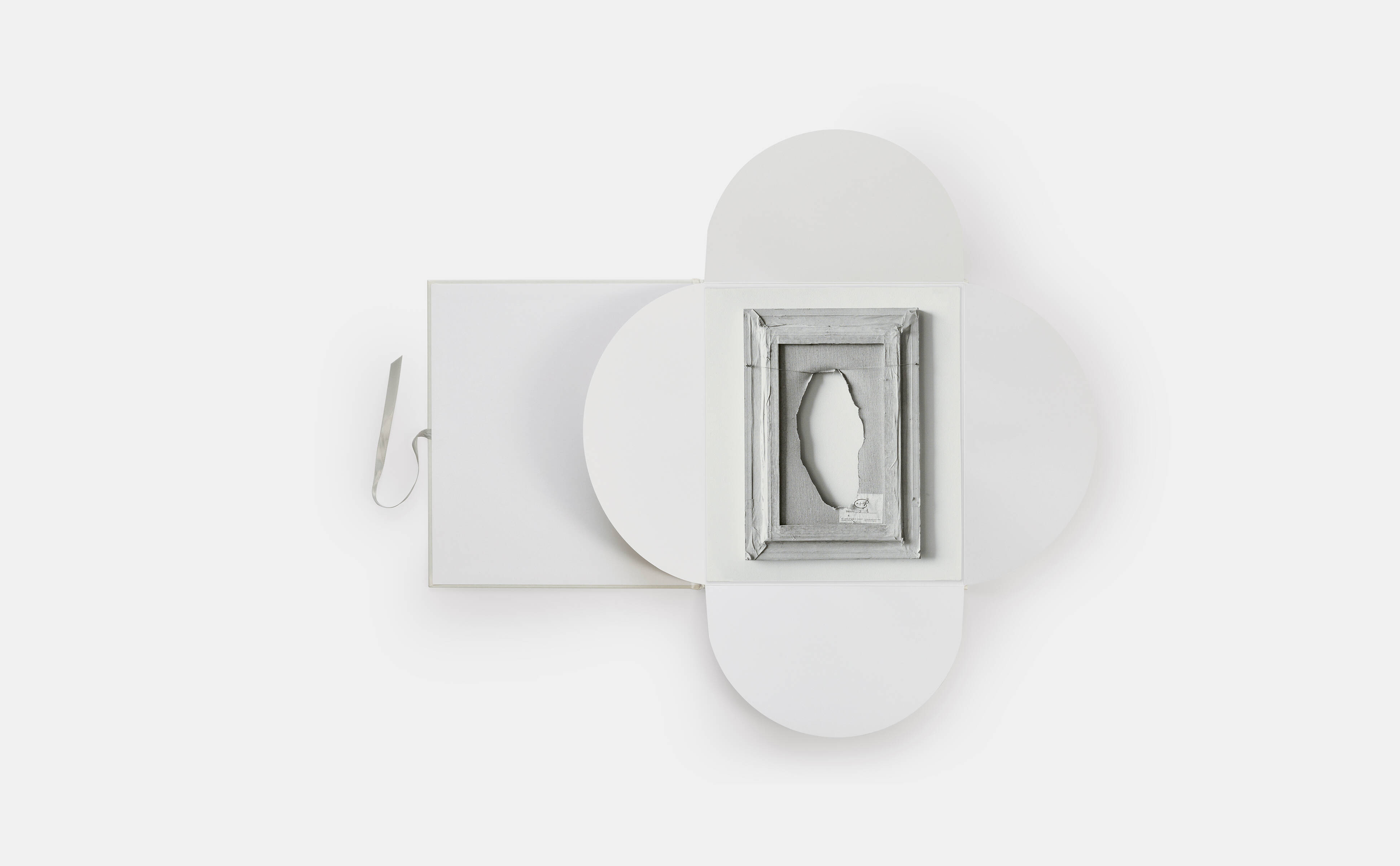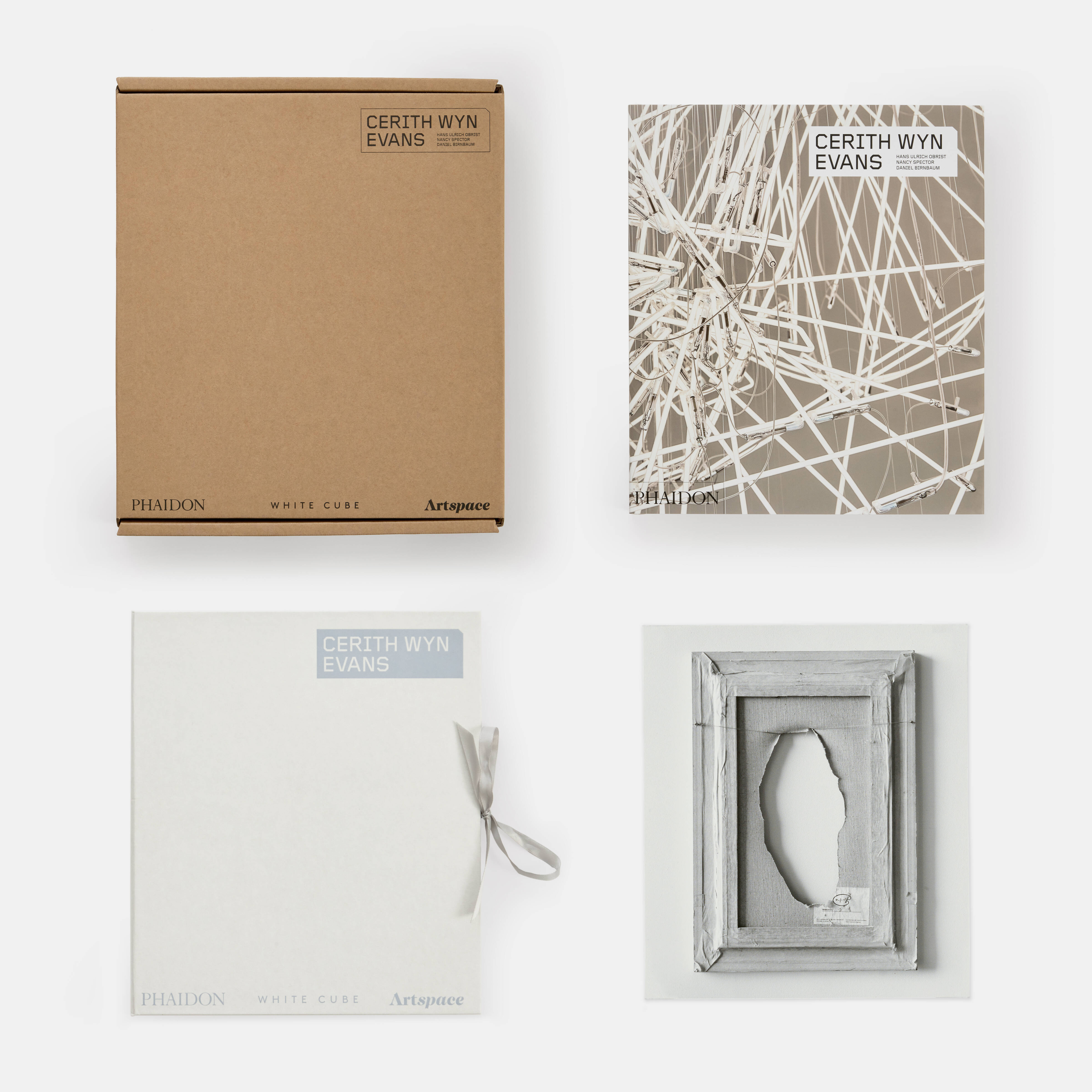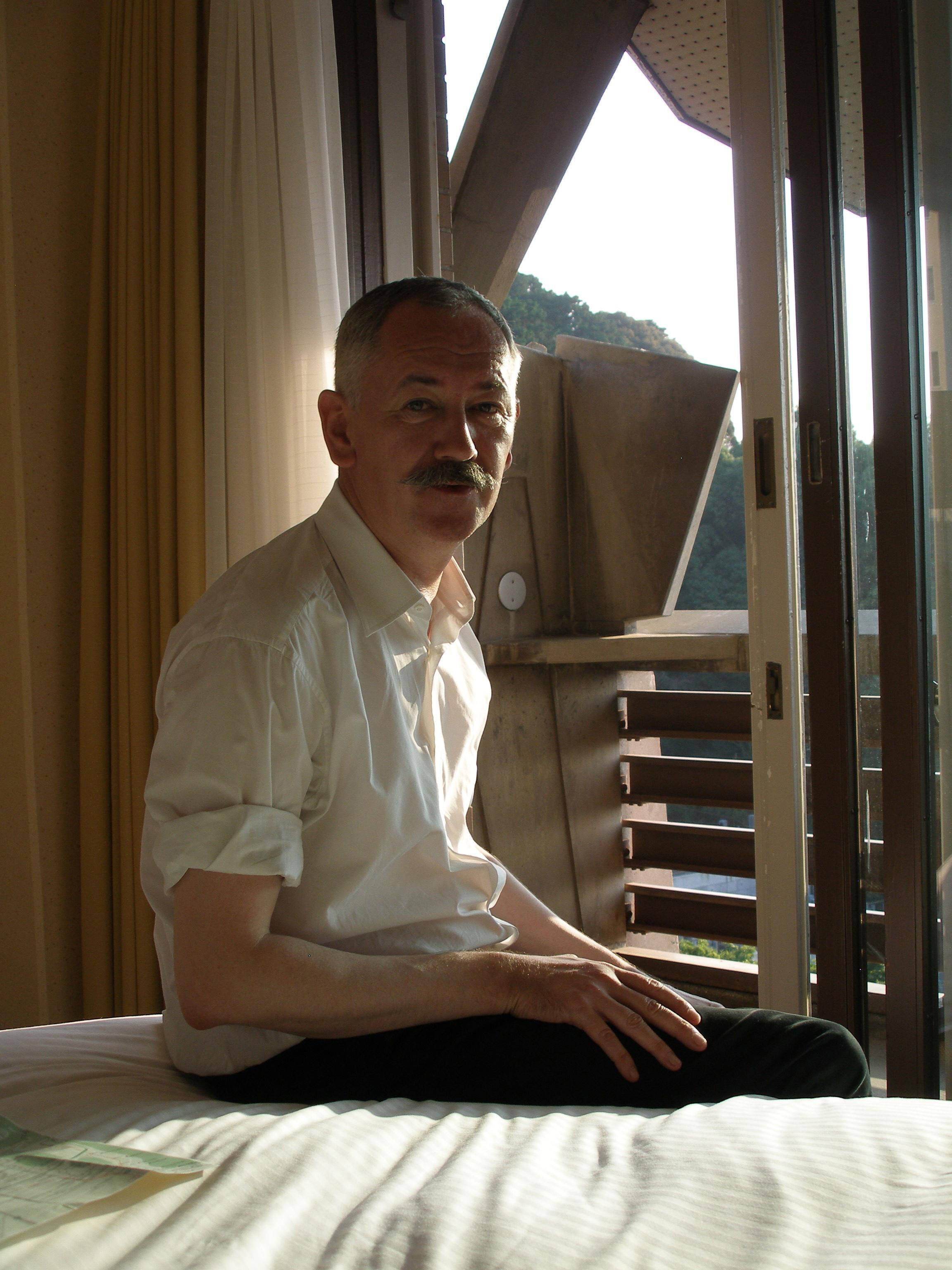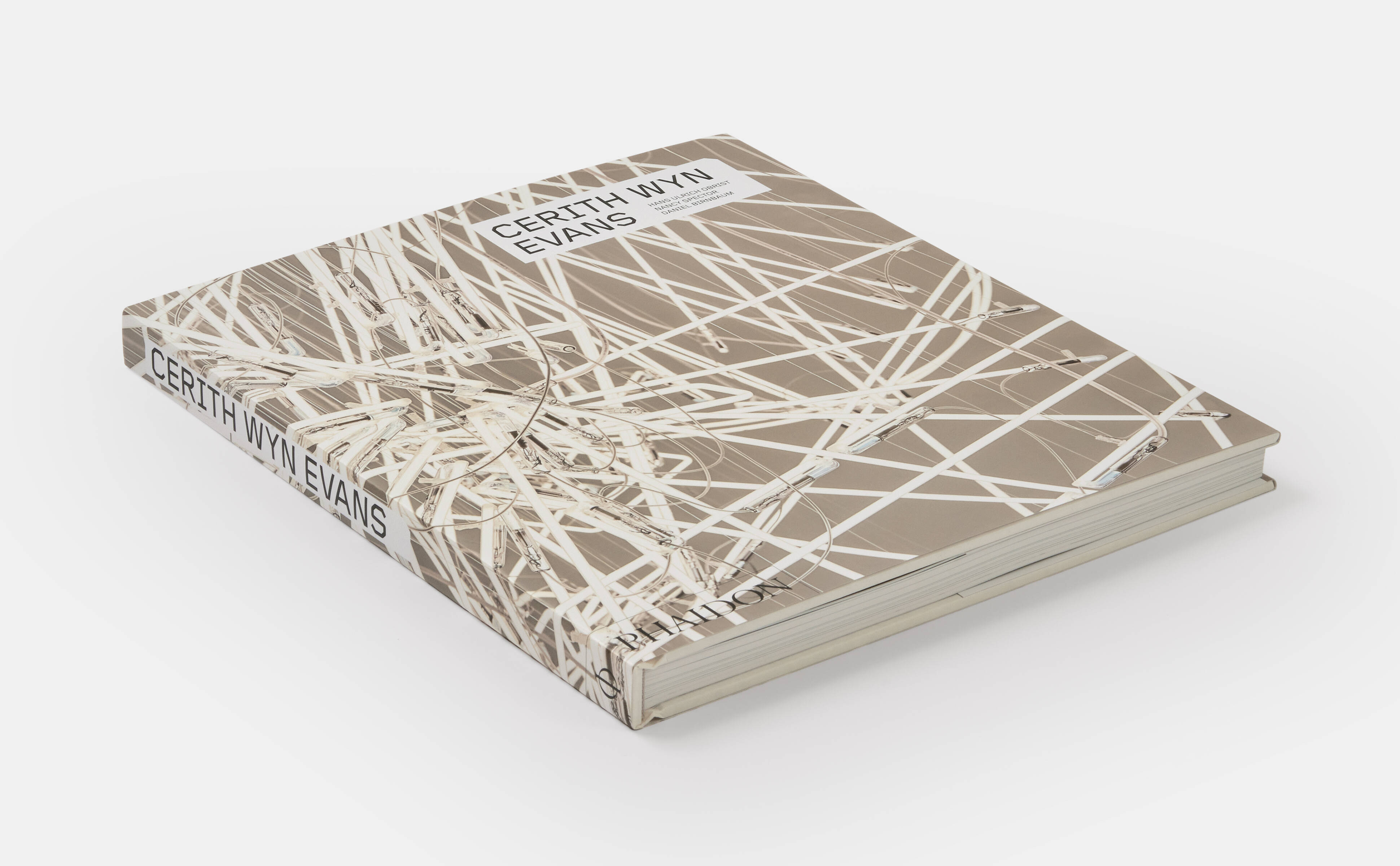
Cerith Wyn Evans releases new Phaidon, Artspace, & White Cube edition
The acclaimed artist says his new print edition is “a threshold of sorts, where ambiguity is encouraged.”
Cerith Wyn Evans has always believed that the boundaries between fine art and real life can be dissolved – that an artist can, in a sense, live in their work.
Throughout the varied career of the highly-acclaimed Welsh artist he has created work in a number of mediums that confounds convenient and all-inclusive definition, yet somehow connects privately on a profoundly emotional as well as cerebral level.
Evans often talks about a deployment of ‘opacity’ in his work; something which frames an aperture, or a door you can pass through into a space behind; “the back of language almost,” as he refers to it. And it’s this suggestion of 'another world' that characterises his best work. Indeed, in his large scale sculptures and installations, Wyn Evans endeavours to “create an experiment in the room”, in order that the viewer may come across the unexpected.
He has also spoken about the 19th century French symbolist poet Stéphane Mallarmé’s approaches to text, which allow multiple non-linear readings, along with James Joyce’s ability to construct a new language operating outside space and time, as being inspirational in his own practice.
Factor in an engaged approach to the incredibly varied, and highly sought after, editions he’s created over the years, with the likes of Tate, Serpentine, and White Cube (to name a select few), and you have an artist whose artistic practice places an importance on connecting with many while making that absolute connection a completely unique one for each individual. Ask 100 people what they love about his work and you will get 100 different replies.
 Cerith Wyn Evans limited edition and Untitled, 2023 edition
Cerith Wyn Evans limited edition and Untitled, 2023 edition
Perhaps unsurprisingly, Evans calls Untitled, 2023, his new, very limited, Phaidon, Artspace & White Cube edition, “a threshold of sorts, where ambiguity is encouraged.” The edition is limited to just 30 copies and 6 PPs (printer's proofs), and is printed on Somerset Satin Bright White Fine Art 300g/m² weight photo paper.
Editions have long played an important role in Evans’s practice - perhaps unsurprising when you consider the egalitarian spirit of early 80s London from which he sprang to prominence. As the Guggenheim and Brooklyn Museum curator Nancy Spector notes in the Cerith Wyn Evans Contemporary Artists Series book, published alongside the new edition: "Britain from 1979 to 1986 was marked by a swerve to decadent, highly theatrical narratives of excess with an emphasis on the body – particularly the queer body."
“The dramatic shift from ‘asceticism to aestheticism’ drew its inspiration from the gay-inflected films of Anger, Cocteau, Jack Smith and Andy Warhol from the 1950s and 1960s, but it was also of a piece with the contemporaneous London club scene starring such non-binary cult figures as Leigh Bowery and Genesis P-Orridge – both key collaborators with Evans. This was a moment of heightened abandonment, of sheer artistic revelry before the ravages of AIDS would tragically extinguish some of the decade’s most fervent voices.”
Evans was a key member of, and contributor to, that London club scene; shooting films with Bowery and creating music videos for The Fall and P-Orridge’s group, Psychic TV. Indeed, the role of music has played a pivotal role in Evans’s work over the years. The artist learned cello as a kid and has used his own, self-composed music for some of his works.
“I have relied on friends to play and perform in the context of my exhibitions as the gallery space made a stage available," he says. "On many occasions, I have also produced musical instruments as a means of escape from ‘sculpture’ of sorts. In some form or other, music – or perhaps ‘a sound world’ – has played a significant role in my life and work.”
“When I was young, it comprised a sort of soundtrack to my life with the advent of the Sony Walkman – portable sound transformed my view onto the world, turning daily journeys into ersatz cinema. Later encounters with the music of Karlheinz Stockhausen, John Cage, and others expanded the field, and the process of listening took material form.”
There is one thing however, that Evans is slightly more reticent about, and that's speaking about, or trying to explain to others, the essence of his work. Our new Contemporary Artist Series book features an interview exchange with curator Hans Ulrich Obrist in which he explains his reasoning.
“When someone asks me, ‘Can you talk about this work?’ I bristle with frustration and swell with disappointment. This is really the one thing I either don’t want to do or I’m not able to do, without degrading the work’s capacity to exist in the present. You’re reduced to anecdotes and idioms. I don’t know ‘truth to materials’ – we’ve discussed this time and time again – it’s outraged me since I was a child. What is really at stake when making something approachable or accessible or even legible? On the face of it, the nature of the work is quite antagonistic towards these constrictions. You can approach an articulation, you can talk across space, across species and you can look at the notions of there being a confluence or an alignment drawn out to confer meaning. What is occluded by this insistence on ‘plain speaking’, this requirement of ‘clarity’? You measure it against things that aren’t particularly conducive to the freedom of thought or flights of the imagination. This ‘call a spade a spade’ form of thinking is patronising and condescending. It feels imprisoning and counterintuitive.”
“I studied sculpture at Central Saint Martins and experienced considerable disagreement with the prevalent pedagogy. Conflict arose from this. However, looking back, I think maybe they had something to say and that position of ‘Let the work speak for itself ’ has taken on a wholly different paradigm for me. Increasingly, I sense there are ways that the work could, say, surrender. You find in the correspondence between Hanne Darboven and Carl Andre the old truism of ‘Never explain, never apologize’ and in a sense that’s still misinterpreted, which is telling but stays true. And still the ambivalence of Warhol’s ‘Who cares?’ matters.”
However, as he releases Untitled, 2023 along with a new Phaidon Contemporary Artist Series book, we did manage to ask Cerith Wyn Evans a few questions about the edition and his wider practice.
 Cerith Wyn Evans limited edition and Untitled, 2023 edition
Cerith Wyn Evans limited edition and Untitled, 2023 edition
What made you want to create an entirely new edition for your Contemporary Artists Series book? “Given the prescribed parameters of the format, I took those limits to inform my judgment, plus, something ‘new’ often holds the promise of the previously unseen.”
It questions the idea of a print as a more ‘democratic’ piece of art by turning it in on itself and away from the viewer. Was this something you wanted to convey? “The image of a picture ‘turning its back’ on the viewer is what I had in mind.”
There is a suggestion of unease too. Another ‘world’ is suggested. We wonder what is behind and beyond. What is on the other side? “Here, unease is sought after and speculation as to what is ‘behind and beyond’ is left to the imagination of the viewer. I trust there is another world… here it appears occluded. This is the image.”
Could we maybe view this as a visual version of Mallarmés’s text interventions to bend meaning? Does the edition have any inspirational basis in that? “Yes, in a sense… Fresh topologies of difference are always appealing.”
 Cerith Wyn Evans photographed by Ali Janka
Cerith Wyn Evans photographed by Ali Janka
Your work is often large in size and multi-dimensional in nature, does ‘another you’ step in to take up the challenge of an edition? “I have made works in edition for nearly 50 years in almost as many formats and mediums: linocuts, holograms, photographs, mirrors and lightbulbs, posters, pianola scores, mobiles, silkscreens, lightboxes, casts, records and CDs, films, photocopies, scarves, books, lamps, tee shirts, and neons. Always as ‘another you’!”
Music plays a large part in your practice, what do you suggest the viewer play in their head while they contemplate this edition? “No idea!”
You lived through some fairly experimental, turbulent moments in London’s artistic chronology, hanging out with Genesis P-Orridge and other artists in that orbit; how did those experiences shape what you do today? “Not sure. . . Can I ‘phone a friend'?” [
Take a closer look at Untitled, 2023 here. The edition is printed on Somerset Fine Art Satin Bright White 300g/m² weight photo paper and limited to just 30 editions and 6 PPs.
You can also buy a signed copy of our Cerith Wyn Evans Contemporary Artist Series book here.
